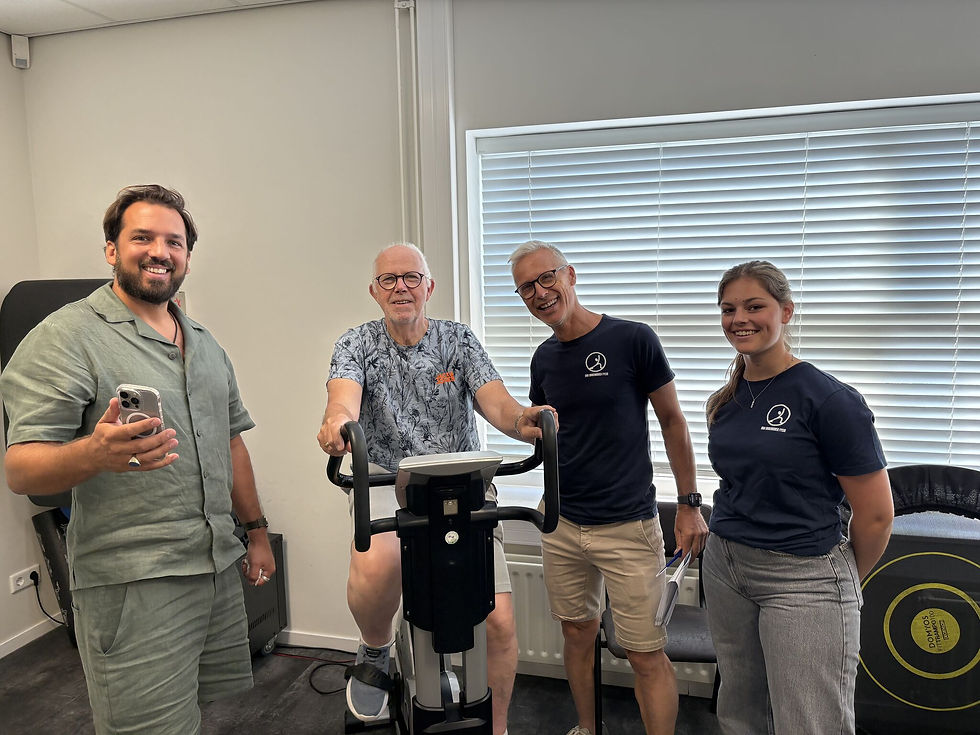Live continuous lactate monitoring
- Maarten Gijssel

- Jan 22, 2024
- 2 min read
Updated: Feb 12, 2025
Just before Christmas, a live demonstration at the University of Sports Science in Budapest was performed to showcase the capabilities of the IDRO Reader. A live demonstration was conducted with a volunteering sports science student. The student wore the device during a simulated training session, and the real-time lactate data was displayed for the audience to witness.
The 20-minute test protocol consisted of a progressive increase in running speed in 3-minute intervals, followed by a one-minute pause between each interval for the analysis of blood lactate levels as a validation method. After the test, a 10-minute cooldown was conducted, after which blood lactate levels were measured again.

The demonstration highlighted how the IDRO Reader provided instant feedback on lactate levels, clearly visible with the lowering of lactate levels during the one-minute stops. This real-time feedback allows users to adjust their exertion levels for optimal performance. Coaches and sports scientists present at the demonstration expressed enthusiasm about the potential for fine-tuning training programs based on individual lactate responses. The raw results obtained from the demonstration are as follows:
The data shows the relationship between blood lactate and sweat lactate is evident.
It's worth highlighting the extreme sensitivity of the IDRO device. As observed, during the
moments of blood lactate measurement, when the volunteer stops the exercise, the sensor reacts abruptly due to changes in sweat flow. The background colours are associated with exercise intensity as follows: green for low intensity (7.5-8.5 km/h), yellow for moderate intensity (8.5-10 km/h), and red for high intensity (10-12 km/h).

If we isolate the sweat lactate data, disregarding the athlete's stops, and compare it
directly with blood lactate, the resulting graph would be like the following graphic. Here, the relationship between both types of lactate becomes clearer. Interestingly, sweat lactate appears to be more sensitive to variations in exercise intensity than blood
lactate.
The IDRO Reader represents a paradigm shift in how athletes and coaches monitor lactate levels. Developed by a team of scientists and engineers, this cutting-edge device provides a real-time, continuous measurement of lactate levels through a non-invasive approach.








